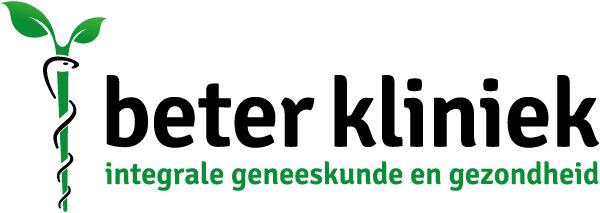Aluminum accumulation in the brain is thought to play an important role in Alzheimer's disease. In Europe, daily silicon intake from food is 20 to 50 mg (in China and India, silicon intake is considerably higher, at 140-200 mg/day); silicon intake is lower in women than in men and declines with age. Changes in food production have made our diet poorer in silicon. Sources of silicon are: whole grain cereals (especially oats, millet), bananas, raisins, beans, lentils, drinking water, horsetail (Equisetum arvense), nettle (Urtica dioica/urens). Silicon has long been stepmothered in nutritional science. Not essential but useful, is the general consensus. British scientists observed the antagonistic relationship between silicon and aluminum in their experiment. They had alzheimer's patients and healthy individuals drink one liter of silicon-rich water per day. After 12 weeks, they saw an increase in aluminum discharge through the urine. Also, mental performance improved. They hope to further explore the relationship between aluminum and silicon in Alzheimer's disease in future research. The researchers expect that chelation of aluminum plays an important role in Alzheimer's.
Silicon
The mineral silicon (silicic acid, Si(OH)4: orthosilicic acid) occurs in high concentration in the human body and is beneficial to our health, but is not yet considered an essential nutrient. Silicon is concentrated mainly in connective tissues (skin, tendons, muscles, bones, cartilage, hair, nails, blood vessels, mucous membranes), kidneys, lungs and liver. Silicon plays a role in the synthesis of collagen and glycosaminoglycans (building blocks of all types of connective tissue) and hydroxyapatite (bone mineral); deficiency can lead to abnormalities of connective tissue, joints and bones, impaired immunity and atherosclerosis. A human study found a positive correlation between silicon intake and bone mineral density; in another human study, a higher intake of silicon from drinking water was associated with a lower risk of cognitive decline and dementia. Silicon is antagonistic to aluminum, blocking aluminum absorption and promoting aluminum excretion with urine (aluminum chelation). Aluminum accumulation in the brain is believed to play an important role in Alzheimer's disease. In Europe, daily silicon intake from food is 20-50 mg (in China and India, silicon intake is considerably higher, at 140-200 mg/day); silicon intake is lower in women than in men and decreases with age. Changes in food production have made our diet poorer in silicon.
Absorption
The fact that silicon is still little known in the medical world is due to the fact that administration of silicon in the form of a mineral salt is not absorbed. It is biologically inactive. On a commercial scale, silicon is obtained by heating silicon dioxide in the presence of carbon. The carbon reduces the silica to silicon. The form silanol, organic silicon where a carbon atom has been added, is biologically available to the body. This is available in drinkable solution or for external use in a gel form. The amount of silicon decreases tremendously as we age.
Aluminum gives serious complaints
Long-term intakes of significant amounts of aluminum can lead to serious health effects, such as: - Central nervous system damage - Dementia - Memory loss - Lethargy - Severe tremors In a number of other, neurological disorders such as Alzheimer's dementia, as well as in a certain form of amyotrophic lateral sclerosis (disease of the nervous system leading to muscle atrophy), autism, certain cancers and Parkinson's dementia, a role for aluminum is also suggested. In patients with dementia, an increase in aluminum is seen in nerve cells containing degenerated neurofibrils (protein fibers in the cytoplasm), a key feature in this disease. In addition, an accumulation of aluminum is found in the nucleus of senile plaques. Environmental acidification releases soluble aluminum compounds into soil and surface water. This means that aluminum appears to be becoming a threat to plants and animals. The aluminum in many agricultural soils could potentially endanger cultivated agricultural crops.
Ecotoxicological effects of aluminum
Recent worden steeds meer ecotoxicologische effecten met name op vissen, amfibieën en bepaalde groepen ongewervelde dieren gesignaleerd. Er blijken grote verschillen te bestaan in aluminiumtolerantie bij verschillende dier- en ook plantensoorten. Uiteindelijk lijkt ook de mens niet aan verhoogde blootstelling van aluminium via voedsel en drinkwater te kunnen ontkomen. Met name jonge meisjes worden veelvuldig belast met aluminium door het overmatige gebruik van deodorant, zonnebrand, lippenstift, blush en nagellak. Aluminium krijgen we ook binnen door leidingwater, vaccinaties en via onze voeding door het gebruik van kunstmest en aluminium-olie. Als het lichaam zware metalen zoals aluminium niet kan afvoeren en uitscheiden worden ze opgeslagen in vettig weefsel. Denk hierbij aan lichaamsvet, beenmerg en de myelineschede (omhulsel van de zenuw). Ook verstoren ze de hormoonproductie van de bijnieren en neurotransmitters. Aluminium heeft daarnaast direct de neiging om de ijzerstatus in het lichaam te verminderen. Ook vervangt aluminium het ijzer op de receptoren waardoor vitamine B12 moeilijk kan worden ingebouwd in de rode bloedcellen. Tekorten aan vitamine B12 en ijzer worden dan ook steeds vaker gezien.
Sources of silicon
Whole grain cereals (especially oats, millet), bananas, raisins, beans, lentils, drinking water, beer, horsetail (Equisetum arvense), nettle (Urtica dioica/urens).
Indications silicon
Improve condition of hair, skin and nails Osteoporosis (also prevention) Atherosclerosis (also prevention) Aluminum load Prevention cognitive decline (associated with low silicon intake) Bruising, sprain, strain, joint problems Skin problems (wounds, burns, acne, psoriasis)
Contraindications silicon
Kidney stones Chronic renal failure Avoid high doses of silicon during pregnancy and lactation (lack of safety data) Directions for use The dosage in silicon supplementation ranges from 10 to 100 mg per day.
Interaction silicon
Silicon enhances the beneficial effects of calcium and vitamin D on bone formation. Vitamin K2 may be essential for building silicon into connective/bone tissue. Silicon has a greater effect on bone metabolism in women with good estrogen status. Silicon inhibits absorption and promotes excretion of the toxic aluminum. Safety The safe upper limit of intake (UL, upper limit) for silicon is estimated at 700 to 1750 mg per day for adults.
Literature
1. Jurkić LM et al. Biological and therapeutic effects of ortho-silicic acid and some ortho-silicic acid-releasing compounds: new perspectives for therapy. Nutr Metab (Lond). 2013;10(1):2. 2. Jugdaohsingh R. Silicon and bone health. J Nutr Health Aging. 2007;11(2):99-110. 3. Price CT et al. Silicon: a review of its potential role in the prevention and treatment of postmenopausal osteoporosis. Int J Endocrinol. 2013;2013:316783. 4. Macdonald HM et al. Dietary silicon interacts with estrogen to influence bone health: evidence from the Aberdeen Prospective Osteoporosis Screening Study. Bone. 2012;50(3):681-7. 5. Barel A et al. Effect of oral intake of choline-stabilized orthosilicic acid on skin, nails and hair in women with photodamaged skin. Arch Dermatol Res. 2005;297(4):147-53. 6. Wickett RR et al. Effect of oral intake of choline-stabilized orthosilicic acid on hair tensile strength and morphology in women with fine hair. Arch Dermatol Res. 2007;299(10):499-505. 7. Davenward S et al. Silicon-rich mineral water as a non-invasive test of the 'aluminum hypothesis' in Alzheimer's disease. J Alzheimers Dis. 2013;33(2):423-30. 8. McCarty MF. Reported antiatherosclerotic activity of silicon may reflect increased endothelial synthesis of heparan sulfate proteoglycans. Med Hypotheses. 1997;49(2):175-6. 9. Sripanyakorn S et al. The comparative absorption of silicon from different foods and food supplements. Br J Nutr. 2009;102(6):825-34. 10. Geusens P et al. A 12-week randomized, double-blind, placebo-controlled multicenter study of choline-stabilized orthosilicic acid in patients with symptomatic knee osteoarthritis. BMC Musculoskeletal Disord. 2017;18(1):2.

